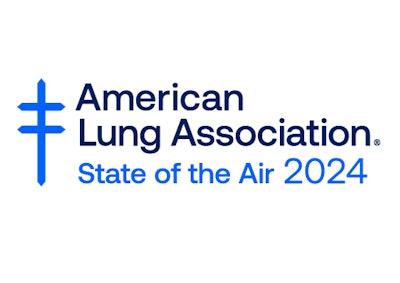
An unceasing rise in pollution has put Americans at increased risk as toxic air conditions surpass those of the last 25 years. The American Lung Association (ALA) published this concerning outcome, along with other notable findings, in its 2024 “State of the Air” report. The ALA has distributed the annual report for the past quarter-century, with this year’s results showing significant setbacks.
Currently, more than 131 million Americans (or nearly four in 10 people) reside in areas with unhealthy levels of ozone or particle pollution. Compared to last year’s report, about 11.7 million more Americans are breathing unhealthy air. People of color disproportionally reside in areas with the worst air quality and are more than twice as likely to be impacted by hazardous conditions. These populations also tend to have higher instances of chronic health conditions, such as asthma, diabetes and heart disease, which makes them more vulnerable to pollution.
Despite ongoing cleanup efforts, the ALA cited major factors including wildfires, drought and extreme heat. These types of environmental events, which are more prevalent in the western United States, cause spikes in particle pollution and high ozone days. Oil and gas industries as well as agriculture also play a role in pollution.
Paul Billings, ALA’s senior vice president of public policy, said the report’s findings on air quality are alarming and somewhat surprising.
“When we started doing ‘State of the Air’ in 2000, I never imagined that in the 25th edition we would be reporting that more than 100 million people are still breathing unhealthy air,” Billings said. “It’s unacceptable.”
The “State of the Air” measures daily and yearly averages of fine particle pollution as well as ozone levels. This year’s report found that nearly two in five Americans live in locations that received a failing grade for at least one air quality measure. Further, approximately 44 million Americans live in locations that received a failing grade on all air quality measures.
Both day-to-day and ongoing exposure to particle pollution and high ozone levels can lead to morbidity or mortality. In particular, elevated short-term pollution (caused by issues like smog) can trigger respiratory diseases such as asthma and COPD. Long-term pollution can increase the chance of heart attack or stroke.
The locations with the best air quality include Bangor, Maine; Wilmington, North Carolina; Lincoln, Nebraska; and Honolulu. Nearly all the cleanest cities, excluding Honolulu, are majority white. Some of the most polluted cities include Bakersfield, California; Fairbanks, Alaska; Denver and Phoenix.
Researchers expected the data to show that Americans living in western regions are at greater risk, which is true when examining year-round particle pollution. However, they were not anticipating the number of air quality problems that they still encountered in eastern and midwestern states.
“There is no safe level to particle pollution,” said Kari Nadeau, MD, PhD, the John Rock professor of climate and population studies at the Harvard T.H. Chan School of Public Health, in an interview with USA TODAY. “We were not meant to breathe this in as humans.”
According to the ALA, successes that stemmed from the Clean Air Act were trending upward. This included reduced emissions from transportation, manufacturing and power plants. However, climate change continues to threaten Americans’ health by making cleanup more and more difficult, with increased pollution levels outweighing lowered emissions.
Recently, the Environmental Protection Agency (EPA) passed several new measures aimed to improve air quality. The ALA encourages the EPA to establish stronger ozone standards as well.
In its recommendations based on the “State of the Air,” the ALA states: “We need action at every level to clean up air pollution and address climate change.”























